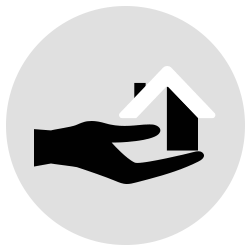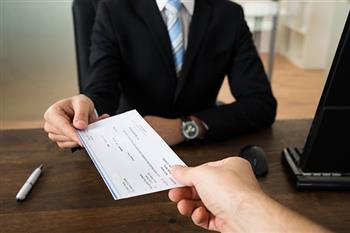Guide to buying a property in Spain
Once you have decided on the property that you want to buy, the process is as follows:
 Preliminary check on the property
Preliminary check on the property
With a nota simple from the Property Registry (Registro de la Propiedad), you’ll find out if the property is free of debt, if it really belongs to the seller, and if the description of the property matches what the buyer has been told (to avoid surprises about missing square meters). You should get this document from the real estate agent before giving any down payment.
 The Mortgage: Part I
The Mortgage: Part I
In the process of buying an existing property in Spain, the mortgage is going to take the most time, so start work immediately. First, you go about retrieving all the documents that the bank asks for. Then they can pre-approve you, and you can safely sign the pre-agreement and pay the downpayment, knowing that you can cover the money required, and be ready for the closing on the date stipulated in the pre-agreement.
There are a wide range of mortgage products available in Spain. Mortgages are sold directly by the lenders, banks or through mortgage brokers. It is very important to research the market, to ensure you find the best deal that suits your requirements. Many lenders issue mortgage offers in English which comply fully with the Spanish legal system.
 The Pre-Agreement
The Pre-Agreement
Between the seller and the buyer, it’s best to have a contract in place until the public deed of purchase is ready. It’s usually a simple document in which the seller expresses their intent to transfer the property to the buyer, and the buyer expresses their intent to buy at the price and conditions agreed upon. At this time, the buyer also gives to the seller a percentage of the agreed-upon price, typically 10%. The typical agreement in Spain (called contrato de arras) is if the buyer backs out of the contract, they lose the deposit; if the seller backs out, they have to pay double. Of course, the buyer and seller may choose another type of agreement if they prefer.
 The Mortgage: Part II
The Mortgage: Part II
Once the bank has a copy of the pre-agreement, they hire an appraiser (tasador). The bank requires an appraiser to ensure that their loan to you is safe. The bank will only give you a loan equal to a determined percentage of the appraised value of the house. Note that the seller or broker need to be available so that the appraiser can get in to see the property. At the closing, you will be charged for the appraiser’s work, usually between 300-500 euros. Note that the tasador is by law a licensed architect, so even if you don’t need a mortgage, but have doubts about the structural integrity of the house, you might want to get an appraisal of the property done.
 The Closing
The Closing
The property transfer must be certified by a notary. The deed of purchase will be given to the buyer after the notary reads it and the parties present agree to the contents of the deed. The following must then be presented: proof of identity (or power of attorney) of both parties, the seller’s title of property (a form that reports the investment to the Central Register), and the buyer’s payment. The buyer and seller sign the contract; beneath their signature, the notary signs using his firma protocolizada and the deed is ready for taxes.
 After the Closing
After the Closing
Once the closing is done, the follow-up work is to make sure the utilities are in order, taxes are paid (see Taxes below), and that your new ownership of the property has been registered (see Property Registry). With a Spanish property in your name, you will need to file yearly income tax and property tax.
 Taxes
Taxes
For the buyer: transfer tax(impuesto de transmisiones patrimoniales) and stamp tax(impuesto de actos jurídicos documentados). If the seller is an individual, the buyer pays a transfer tax. This tax varies between 6% and 10% of the purchase price, depending on the region of Spain. Some regions like Andalucía have a progressive transfer tax, where the percent increases based on the price. If it’s a storefront (local comercial) or parking space sold by itself, the transfer tax will be higher than 10%. If the seller is a real estate developer and the building or land to be built on represents a first-time transfer, then the buyer pays VAT tax instead, meaning 10% for housing, 21% otherwise.
For homes, you also pay a stamp tax. The stamp tax also varies depending on the region — between 0.75% and 1.5%.
For the seller: a local tax called the plusvalia (sometimes it is agreed that the buyer pays this tax).
With a copy of the deed in hand, the seller must go to the City Hall (or wherever local taxes are paid). After filling out the form, the seller will
receive in the mail a notice of how much they have to pay. This amount is calculated based on the number of years the property was held, and on the property’s valor catastral. Be aware that each town has a different procedure regarding payment of this plusvalia. It’s best to ask at the notary’s office about this payment.
 What is a Property Registry?
What is a Property Registry?
You must register your deed at the local office. This guarantees that your ownership rights to the property are fully protected. (Some small towns don’t have an office, some big cities have many — check the original deed of the seller to find out which office corresponds to you). You will be charged a standard fee (about .4% of the first 6010 euros, going down to .02% for over 6,010,121 euros).
 What is a Nota Simple?
What is a Nota Simple?
A nota simple is a report from the Property Registry that describes the property. Information about the property usually includes:
- whether the property has debts, usually for mortgages or unpaid taxes.
- the current owner
- the boundaries
- the total square meters of the land, and of the house if there is one.
- how the land has been classified: rustic, urbano, urbanizable.
- the rights that others may have on the property, such as public paths/roads, water or sewage lines.
In Spain, debts may be tied to a property rather than to the owner of the property. When the owner goes to sell this property, these debts are apparent to the prospective buyer.
 What documents will the bank ask for?
What documents will the bank ask for?
The documents typically required by a bank are:
- Your DNI/NIE number. (You must get apply for a NIE number before you can buy a property in Spain.)
- Your contract of employment
- Your last 3 payslips
- Your latest income tax return
- Your pre-agreement with the seller
- Proof that the property tax (IBI) on the house is paid up
- Details of other mortgages or loans that you may have
- All property deeds, both in Spain and overseas
- Certificate from work authorities (vida laboral), showing your past work history
- Records of your current assets (bank/mutual fund statements, etc.)
- Prenuptial agreements, if any
- non-residents: A certificate of non-residency (form available from the bank)
- If self-employed: Local tax on economic activities (IAE)
- If self-employed: Records of your assets during the last two years
- If self-employed: VAT tax you paid for the last quarter and last year
 What are the main types of mortgage in Spain?
What are the main types of mortgage in Spain?
The vast majority are variable-rate mortgages, though you can also find fixed-rate and interest-only mortgages. In a variable-rate mortgage, repayments vary according to the Euribor, the base rate set by the European Central Bank. A typical bank offer might be “Euribor + .41%”, with no opening fee, no cancellation fee, and a first-year fixed rate of 3.50%.
 What is the typical length of a Spanish mortgage?
What is the typical length of a Spanish mortgage?
In the past lenders used to offer between 10-20 years. Now you can find 25 year mortgages or longer, depending on the lender.
 How much can I borrow?
How much can I borrow?
The lenders will decide this after reviewing your personal and financial profile. In general Spanish mortgage lenders give 60%-70% of the value of the property to foreign buyers of Spanish property. However, you may be able to find lenders offering up to 80%.
 Are there additional costs when obtaining a Spanish mortgage?
Are there additional costs when obtaining a Spanish mortgage?
Yes. These can be summarized as follows:
Property Valuation Fee: Before granting a mortgage, a Spanish lender will require the property to be valued by one of their own appointed appraisers. The buyer is responsible for this fee.
Mortgage Opening Fee: Many lenders charge a fixed fee of around 1% for setting up the mortgage.
Mortgage Insurance: It is a legal requirement of Spanish mortgages that you obtain general house and contents insurance. Depending on your circumstances, you might also consider life and mortgage insurance.
Mortgage Early Cancellation Fee: Buyers should be aware of this as it varies between lenders.
Mortgage Notary Fee: If a Spanish house is to have a mortgage registered against it, this must be declared before a Notary. The Notary will charge for this.
Spanish Stamp Duty: (known as AJD) is a tax on mortgages which is paid to the government. It is calculated as a percentage of the mortgage.
Deed Arrangement Fee: The lender employs a gestoria to arrange for the deeds to be correctly registered at the Land Registry. The buyer is responsible for the gestoria‘s fee.
Land Registry Fee: Following completion the buyer will incur the land registry fee for completing the Registration.
The buyer should consider the above carefully when budgeting to purchase a property. The buyer should make sure they can get approved for a mortgage before putting a down payment on the property. Since 2007, banks are much more stringent as to who they will approve, especially to a foreigner without a regular payslip.



